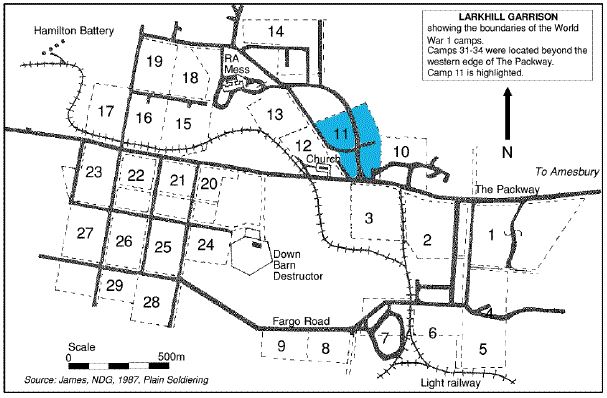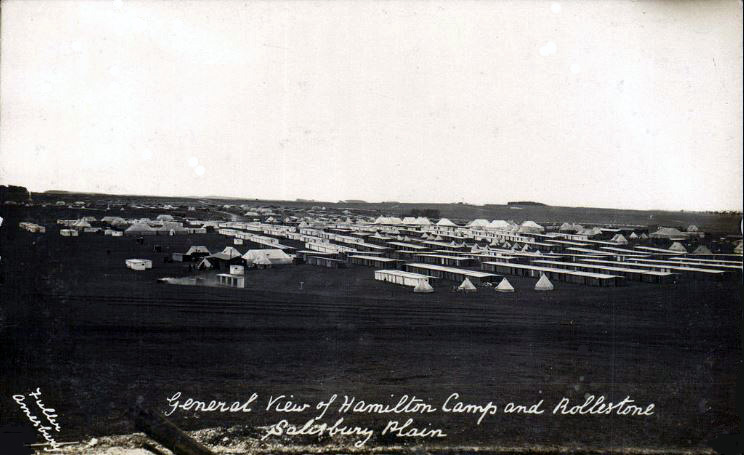Difference between revisions of "Rollestone"
From Our Contribution
m (Linton moved page Rollestone to Rollestone camp) |
(→Soldiers) |
||
| Line 23: | Line 23: | ||
==Soldiers== | ==Soldiers== | ||
| − | *[[David Forbes Abernethy]] | + | *[[David Forbes Abernethy]] 3 Mar - 13 Jun 1917 |
==References== | ==References== | ||
Revision as of 17:49, 15 January 2019

Remarks
The military camp is 2.9 km to the northeast of the township on the B3086 from Shrewton to Larkhill.
Military usage of land to the northeast of Rollestone began in the early 20th century, as artillery firing ranges which were later used by the Royal School of Artillery at Larkhill Camp. Rollestone Camp was established in 1916 by the Royal Flying Corps for observation balloon training. Around this time the Amesbury and Military Camp Light Railway was extended from Larkhill to Rollestone and beyond; this extension remained in use until about 1923. Balloon-related usage of Rollestone Camp continued until 1939 when the site became a Royal Air Force Anti-Gas School, which closed in 1945. For several months in 1980–81 the camp was used as a temporary prison (HMP Rollestone Camp) during industrial action by prison officers. The camp continues in use as part of the Salisbury Plain Training Area.
During WW1 a Military Light Railway connected Larkhill to the London and South-western Railway spur, at Amesbury Station, crossed the Packway and terminated at Rolleston Camp, with a spur to the site of the original Fargo ammunition dump. The course of the light railway’s permanent way, though pulled up in 1935, can be traced by a line of apple trees that, it is said, have grown from the seeds of apples thrown out by troops on passing trains.
The welfare buildings, on the camp, nearer to the Garrison Church than today’s shops, comprised of:
- Bollen’s Fruit Stores
- Vallers & Co, newsagents
- Sergeant’s Empire Stores and Restaurant (See photo below)
- the YMCA
- The Salvation Army
- the Military Cinema, and the
- 1200 bed Fargo Hospital, built in 1915, north of Fargo plantation.
Soldiers
- David Forbes Abernethy 3 Mar - 13 Jun 1917
References
- ↑ James, Noel David Glaves (1987). Plain soldiering : a history of the armed forces on Salisbury Plain. Salisbury, England: Hobnob Press. ISBN 0946418039.
